Racing line
The racing line is the quickest route to drive any corner – it has three stages, turn in, apex and exit which we’ll examine in detail. This special two part article explains how to recognise the line, and drive any corner like a pro. Welcome to the definitive guide to the racing line.
Part 1 - Understanding the racing line
The racing line is the route a racing driver follows to take corners in the fastest possible way. By using all of the available space on the track, cars can travel in a straighter line and travel faster before reaching the limits of grip. Determining the best line is an essential skill to master for both track days and racing events.
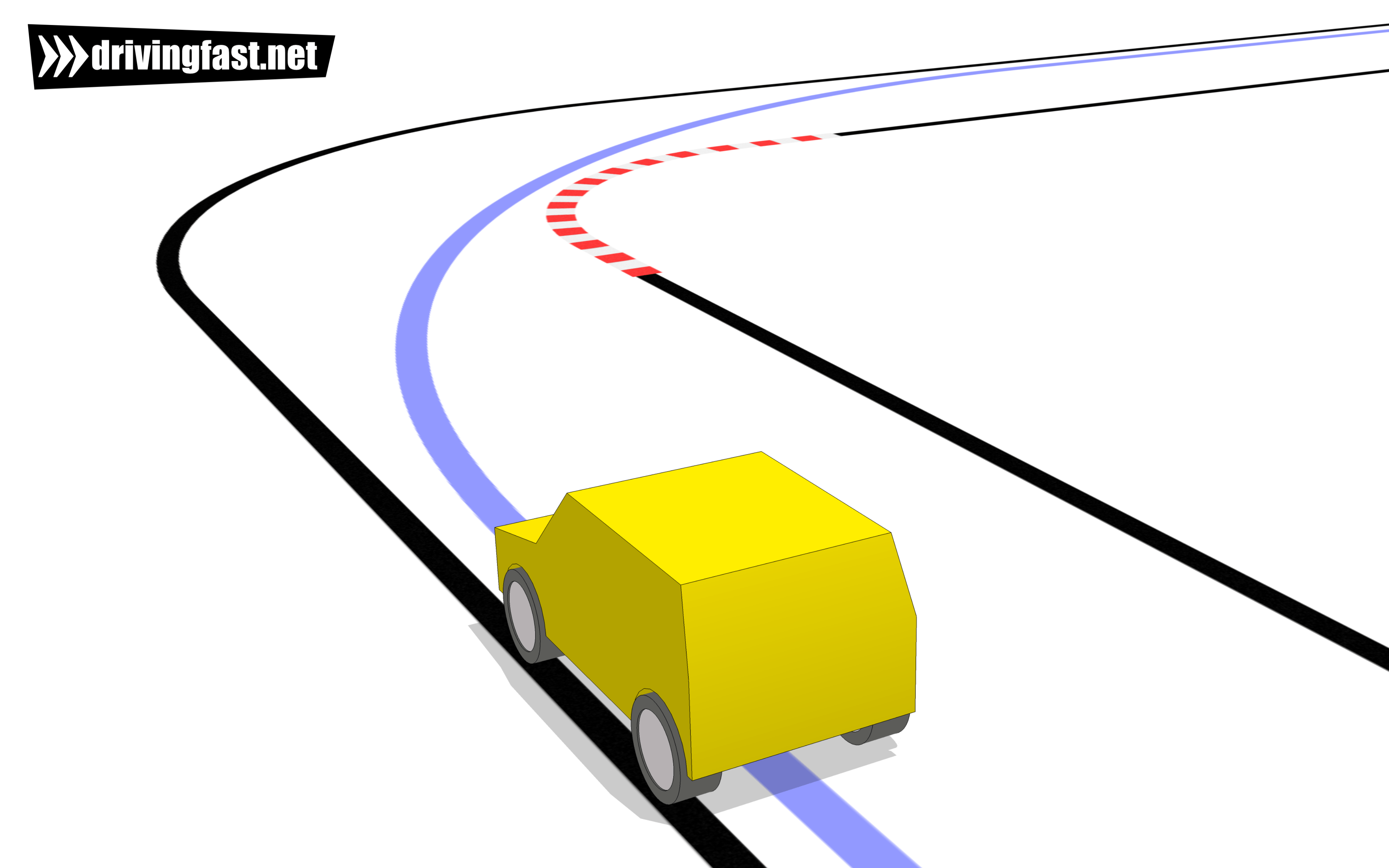
Introduction
The racing line line depends on the following factors:
- Braking point
- Turn in point
- Apex
- The position and direction of the next corner
It is important to remember that there is rarely a perfect line through any corner for all circumstances. It depends on the characteristics of your car, your cornering strategy and the conditions. If you’re racing, you may also have to react to the position of other cars on the track. You should experiment with different lines and learn from instructors and the people who know the track best.
Braking point
How good are your brakes? How quickly can you reduce your speed from 100mph to 40? How does your car behave when the front wheels are locked? How brave are you feeling? All these factors determine your braking point.
The main objective when braking before a corner is to slow down enough to clip the apex. Too fast and you’re likely to push wide. Too slow and you might need to accelerate mid-turn. Either way you won’t be going as quick as you can.
It’s a sensible strategy to brake earlier when learning the track and getting familiar with your car, then progressively shorten the braking zone as your experience grows. The rule of thumb is to reduce your speed and be off the brakes before turning into the corner, although a slight brake pressure on entry can help to reduce understeer and provide a better turn in (this is known as trail braking).
Turn-in point
To get the line right, it is vital to turn in at the correct point. Leave it too late and you’ll miss the apex, too soon and you’ll have to tighten your line mid-corner. Get this right and you’ll have set yourself up for a good line. Remember that the apex may be further round the turn than you can see, so make sure you learn the track and the clipping points before driving in anger. On track days, there are often cones on the track to help new drivers learn the course – but even when the cones are gone there are often visual clues which you can use and a good instructor will be able to help you find them.
Apex
The apex is the point at which you are closest to the inside of the corner, also referred to as the clipping point. Once you have hit the apex you should be able to reduce the steering lock, start increasing the throttle and focus on the exit. Determining the apex can be tricky at first but the guidelines below explain how to do it.
There are two different types of apex, the geometrical apex and the racing apex. The geometric apex of a constant radius corner is the central point on the inside and this can also be the racing apex, depending on the context. This can be confusing and is determined by your cornering strategy.
There are two main strategies for cornering:
- Minimising the severity of the turn and carrying speed through the corner (great for less powerful cars or when driving in the rain)
- Getting the power on early for a faster exit speed (great for powerful cars and when racing)
The geometric apex
For carrying speed and minimising the turn severity.
To carry maximum speed through a corner, you need to take the route that minimises the tightness of the corner arc. This minimises cornering force and frees up precious grip for maintaining speed. This route tends to use the geometric apex of the corner and is usually known as the classic racing line. In Diagram 1, the turn illustrated is a constant radius 90 degree right hander and the geometric apex is exactly halfway around the corner.
Advantages of the classic / traditional line:
- Smooths out corners in the most efficient way
- Maintains momentum (can be useful for low powered cars)
- Reduces the chances of understeer or oversteer (especially helpful in the rain)
- Preserves the life of tyres
Disadvantages:
- Not necessarily going to yield the fastest possible lap times
Late apex
For getting the power on early.
Oddly enough, carrying the highest average speed round corners may not actually be the quickest way around a track. If the corner leads onto a straight it can be better to take a late apex, straighten out the car and get the power on earlier for a high speed exit (Diagram 2). This is generally regarded as the best strategy for racing, with a slightly lower entry speed but a faster exit speed. The amount of grip available is the factor which determines how late you can brake and apex.
Advantages of the modern racing line:
- Increases the chances of a fast lap in a powerful car
- Allows the power to be applied earlier
- Maximises the use of any straights following the corner
- Allows late braking
Disadvantages:
- May not be the fastest route in a low powered car
- Places greater demand on the tyres
Common mistake:
It’s very common for drivers to apex too early due to nerves about the approaching corner and eagerness to take the turn. The racing line apex which is often out of view at the point of turn in, or further round the corner than you expect (see Diagram 3 below). This is where experience and track knowledge come in.
Hairpins
A hairpin is a corner which turns about 180 degrees. In this case, the apex for the racing line is about three quarters of the way around the bend (see Diagram 4). A useful guide is that halfway through the turn you should be roughly in the middle of the track.
The position of the next corner
The position and direction of the next corner also affects the choice of line. For example, if the next bend is a left hander you’ll need to move over to the right hand side of the track, and thus will need to apex later and take a tighter, slower line. However if the next corner is another right hander a wider faster arc can be used (see Diagram 5).
Part 2 - Driving the racing line
Once the optimum route through the corner has been determined, it’s time to negotiate the turn in the quickest way possible. To do this will, you need a decent knowledge of your car’s limits, some time to learn the track, and a combination of car-control techniques.
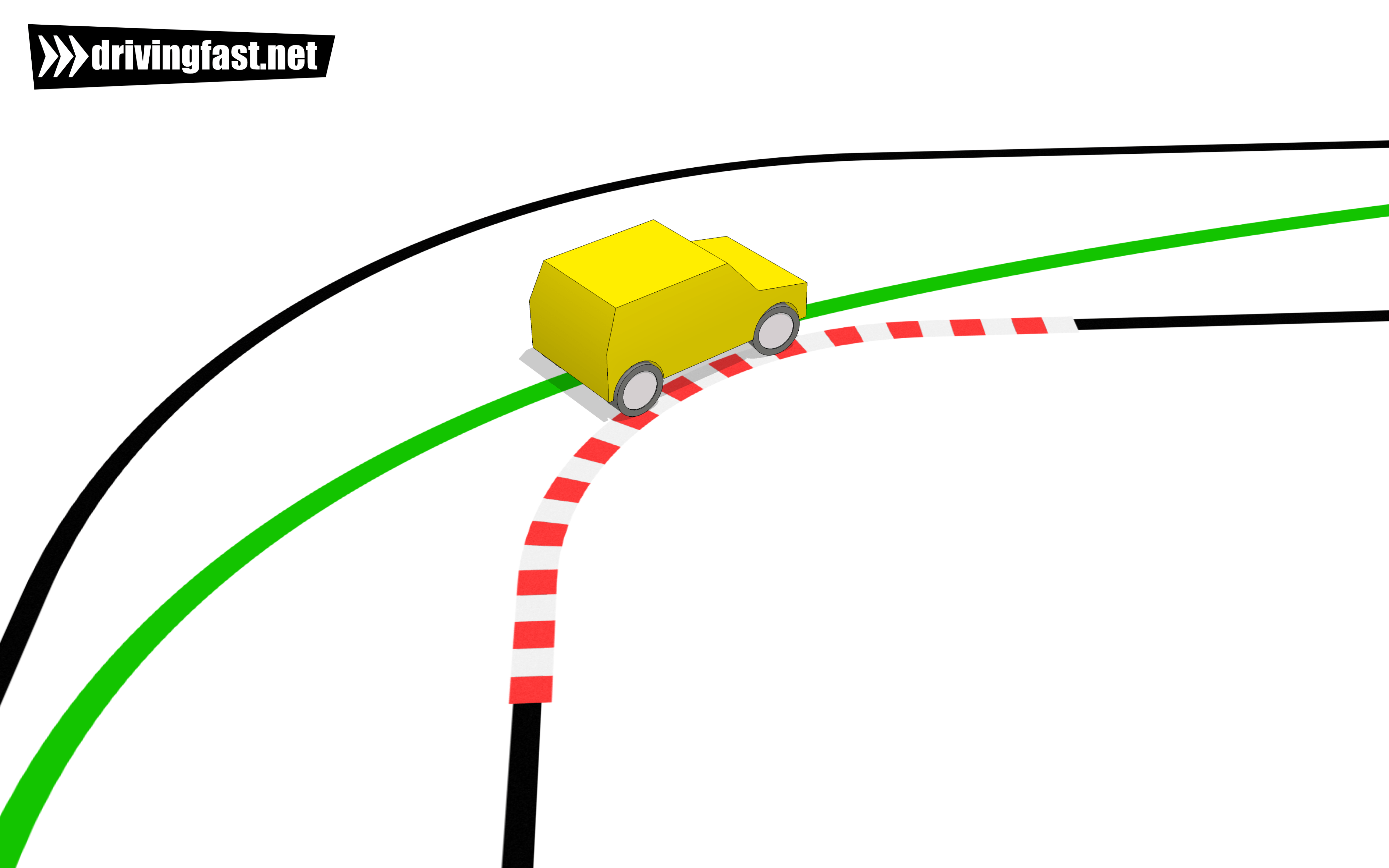
Sections of a corner
The corner (including the sections of track immediately before and after) can be divided into distinct zones which are shown in Diagram 1 below.
- Acceleration zone (prior to cornering)
- Pedal transition
- Braking zone
- Gear change
- Turn-in point
- Neutral throttle (or trail braking for experienced drivers)
- Apex point
- Acceleration (after hitting the apex)
- Full power
Acceleration zone
To get the best times on the track you need to be either accelerating or braking at all times while on the straights – any coasting means you’re losing precious seconds! Try to accelerate all the way up to the braking zone and use maximum throttle up to the last point.
Pedal transition
Before you can begin braking, there is a short break as you release the throttle and apply the brake with your right foot. Left foot braking is an advanced technique which can reduce this time to the bare minimum, but should be reserved for drivers who are comfortable with this technique.
Braking zone
The braking process can be divided into three. First use a light pressure to settle the car, compress the front springs and increase the front grip, next a progressive increase to maximum braking force, then feather the pressure off before entry to the corner. Maintain subtle brake force into the bend if trail braking is needed. All movements should be smooth, fluid, and considered – if you’re stamping on the pedal you could do better. Braking can apply more force to the car than any other action, so there is serious potential to upset the balance of the car.
Due to the forward weight transfers, there is a possibility that you may lock up one or more wheels (or activate ABS), but as you’re travelling in a straight line this will shouldn’t cause any detrimental effects. Ensure that you have come off the brakes, or reduced braking to a minimum before you turn in. As you learn the track and your tyres warm up you will be able to leave the braking point later.
Trail braking
Once you have mastered the racing line and the various stages of driving through a corner shown in Diagram 1, you might consider taking things one step further with trail braking. This involves braking later and continuing to brake into the early phase of the corner before the apex. This can help improve your lap times, but also pushes your car closer to the limits of grip.
When to use trail braking
Trail braking should be considered in the following situations:
If you have a car which is prone to understeer when turning into a corner
If you have a car which naturally has a tendency to understeer, feathering the brake into a corner will maintain a forwards weight transfer and can provide additional grip at the front wheels. This can sometimes allow a faster cornering entry, but the success rate depends on the setup of your car.
If you have accidentally left your braking too late and need to further reduce speed to be able to take a corner
If you find you have ploughed into a corner too fast and feel that there is a risk you might not be able to remain on the track , trail braking can help. Remember though that the less braking you can get away with mid-corner the better. So only use as much braking as you absolutely need to – this will leave you with greater reserves of grip which can be used to keep you on the track while cornering. This technique should be treated as a method of recovery rather than a matter of habit.
If you have perfected the racing line and the phases of cornering and are looking to further improve lap times
Once you have cornering down to a fine art, trail braking is a method of further improving your lap times. When performing this technique at speed, it’s important to remember that the majority of the braking should still be completed in a straight line. However to squeeze every last ounce of performance from your car, you can start to leave your braking point slightly later and continue to use the brakes in the corner prior to the apex. Before you turn in, progressively start to ease off the brakes until they are fully released at the apex ready for the acceleration phase. Some cars do not react well to trail braking, especially those prone to lift off oversteer – although there will be more grip available at the front wheels while trail braking, the rear will be more prone to break loose. Beware!
Gear change
Before you turn into the corner you’ll usually need to change down. The golden rule here is to select a gear which will allow you to accelerate out of the bend efficiently. Heel and toe shifting can be a useful technique to master here as it allows you to brake and change down simultaneously while avoiding transmission shock loads which can unbalance the car and cause unwanted weight transfers.
Turn in
Steering movement can be treated in a similar way to the braking principals. Don’t chuck the car in, instead apply a subtle gentle ‘pre-steer’ for a fraction of a second to settle the car into the necessary attitude before the main turn in action. Steering needs to be transitioned with the braking process – getting these two elements working in harmony is the mark of a pro.
The perfect corner involves tightening the steering until the apex (see diagram above) and then gradually unwinding the steering lock. If you find yourself increasing or correcting the steering lock as your travelling through the corner after the initial turn-in you’ve probably taken the wrong line.
Balanced / neutral throttle
The largest demand on the grip reserves of your tyres occurs between the turn in point and the apex. It is vitally important not to place additional demands on the tyres by accelerating or braking. This isn’t to say you can’t retain a constant speed, but the important factor is that the car is in a neutral state until after the apex. Understeer or oversteer are most likely to occur at this point.
Clipping the apex
When hitting the apex don’t be worried about cutting the corner slightly. During a corner, the weight is transferred to the outside wheels, and thus these are doing most of the gripping. Putting the inside wheels onto the rumble strip or slightly into the gravel shouldn’t be too much of an issue.
Post apex acceleration
Once you’ve hit the apex, you should be able to start reducing the amount of steering lock. As you are doing this progressively increase the throttle up to the point of full power. The point at which you can apply full power depends on your car. Some cars will be able to apply full power straight after the apex, depending on the severity of the corner and the conditions.
The next corner
By now you should already be thinking about the next corner and position your car appropriately to allow you to use the racing line, this may affect your route and the first corner may require a compromised line.
Factors which affect cornering speed
The overall speed at which you can take a corner depends on a vast number of factors including your experience, the handling of your car, and the conditions of the track. For example, a turn with a beneficial camber can dramatically increase the speed that can be sustained. It’s really important not to second guess cornering speeds but build up the pace gradually lap by lap until you feel the limits of grip approaching.
General note
All of the above guidance depends on your driving style and the car you’re using. You will not be able to use all the power of a Bugatti Veyron or McLaren F1 until you’re completely in a straight line, however if you’re in a lighter less powerful car you can apply the gas much closer to the apex point. It’s very rare to achieve the perfect corner, it takes knowledge of the track and the car and a great deal of practice!


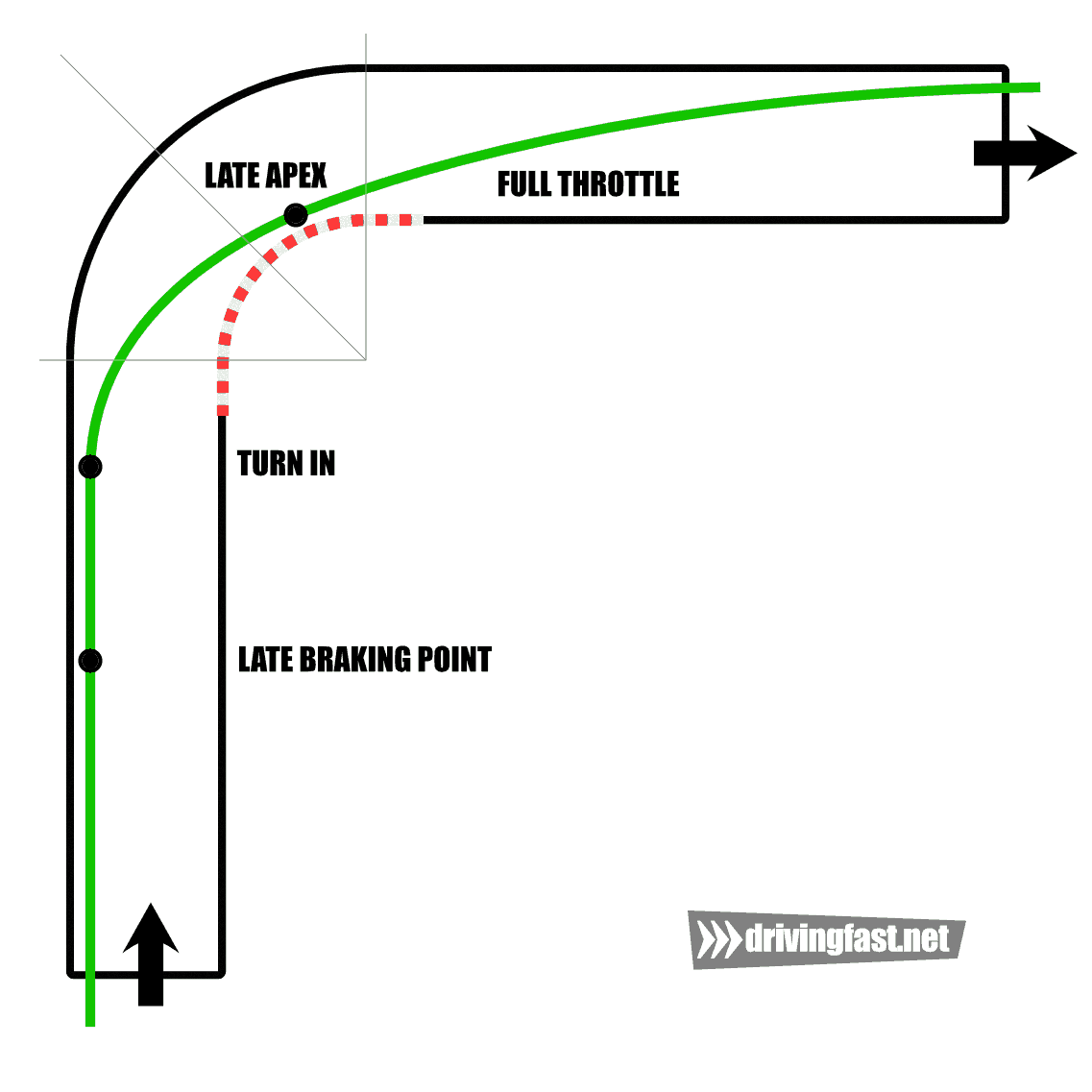
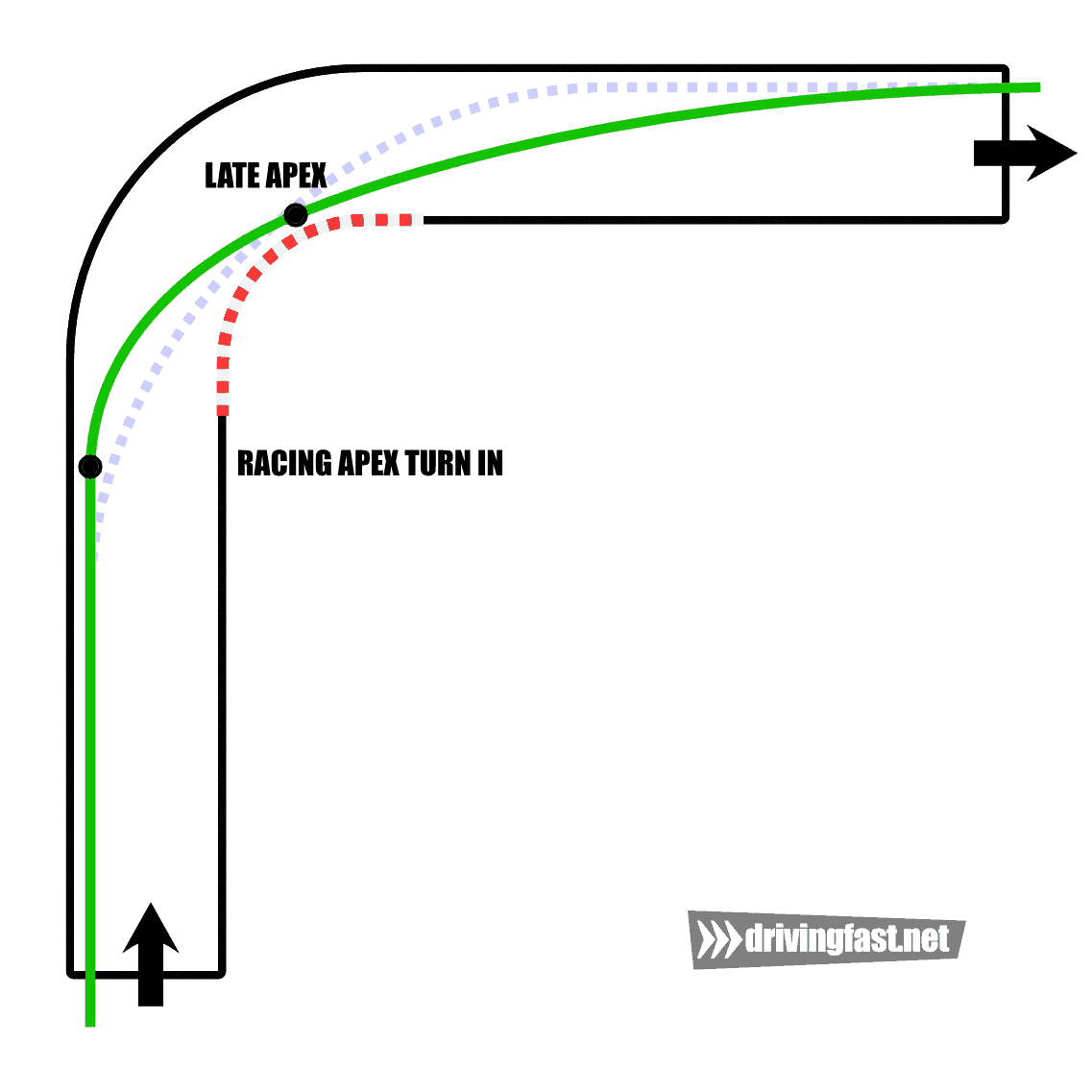
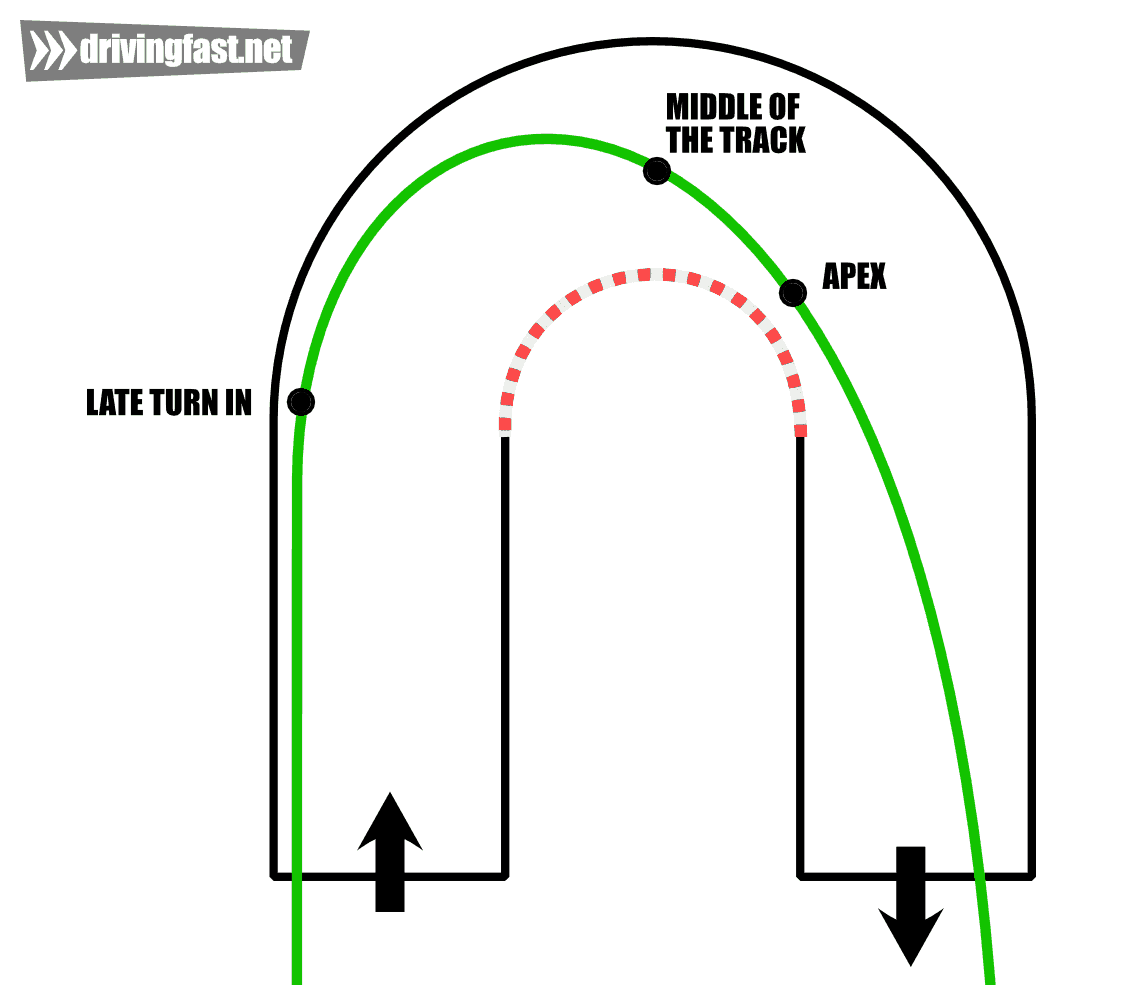
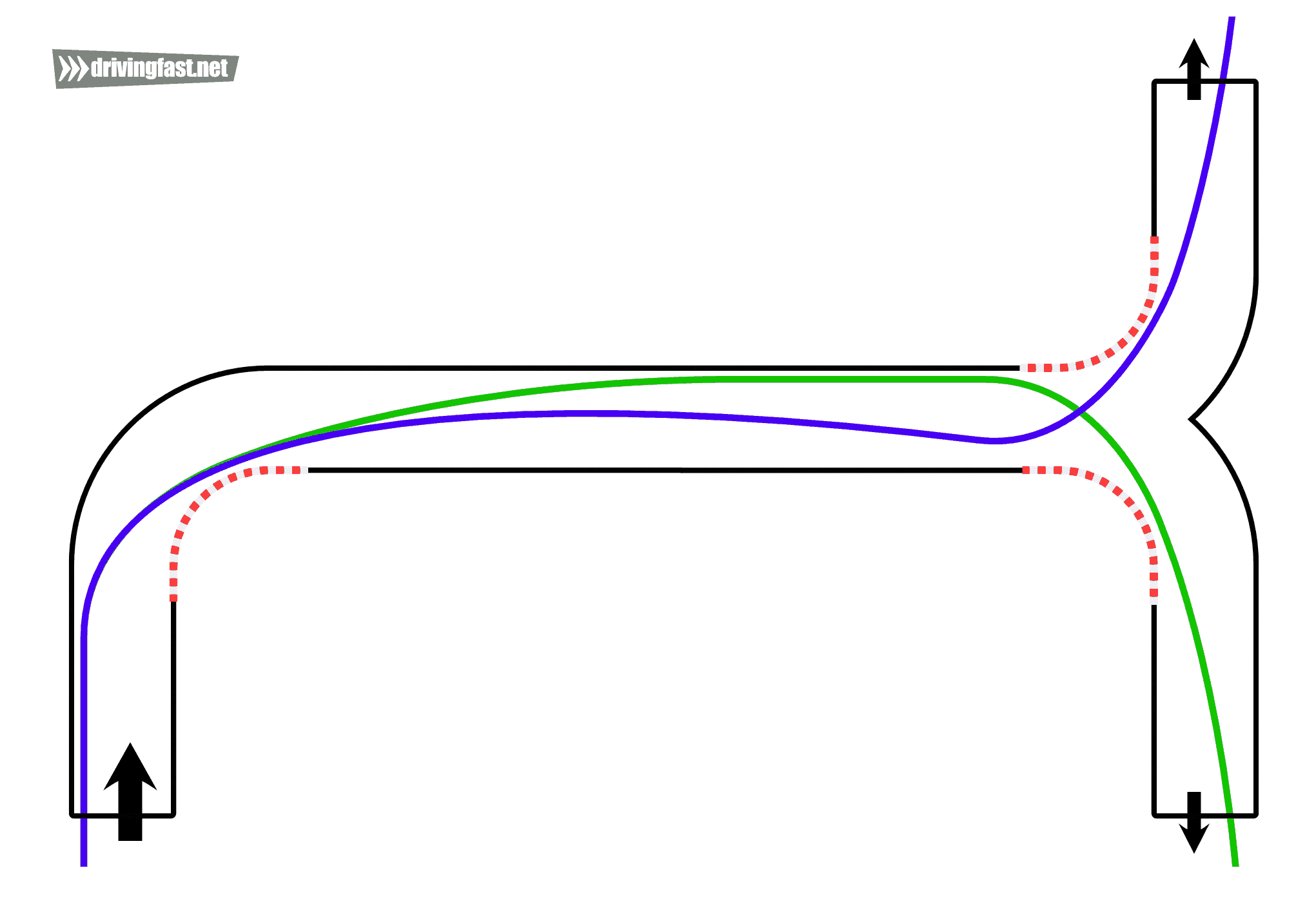
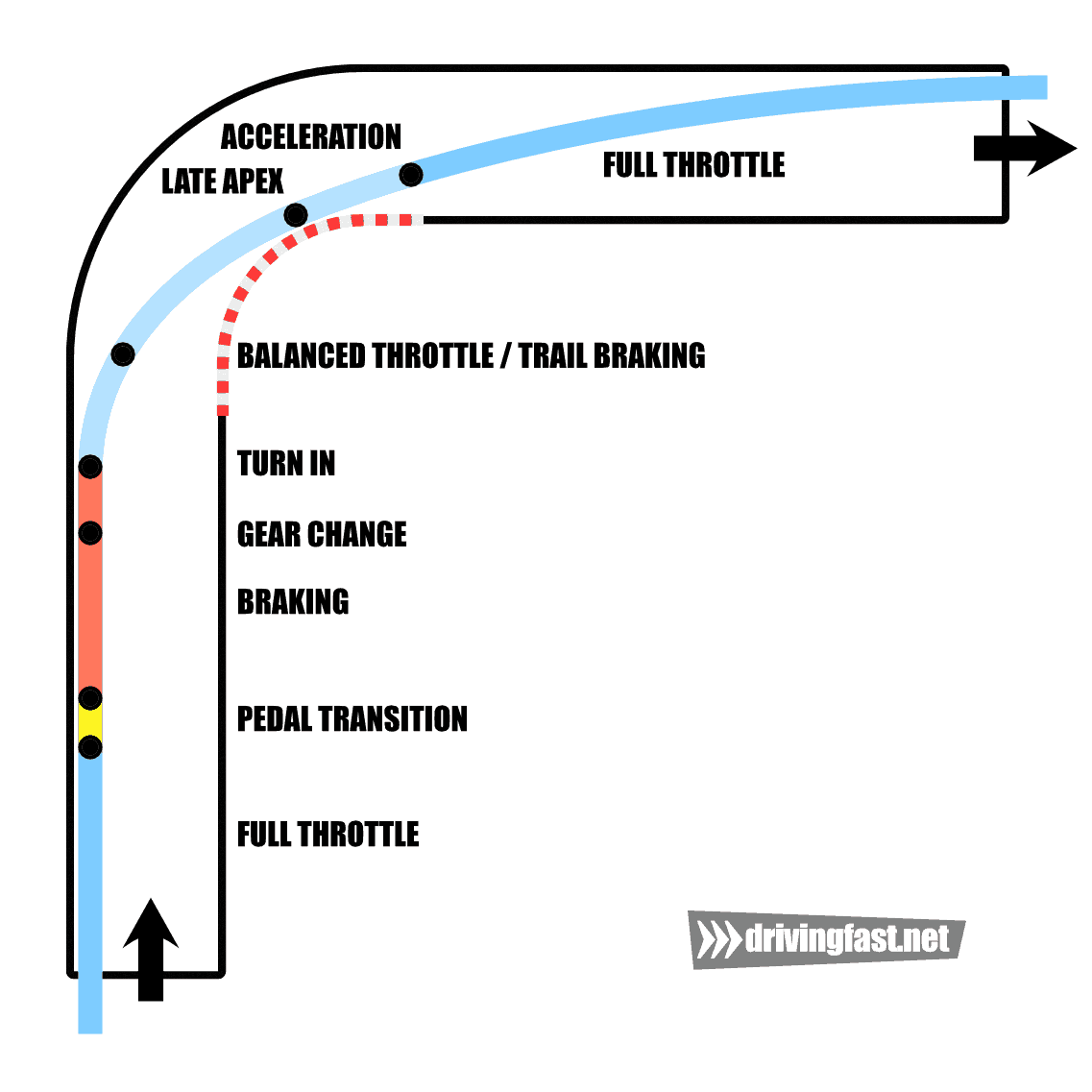
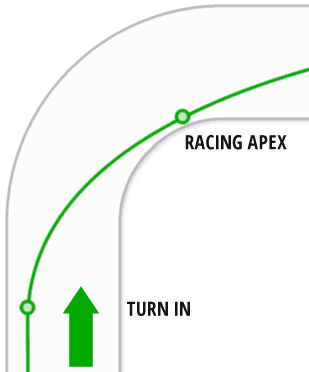
This is some great information